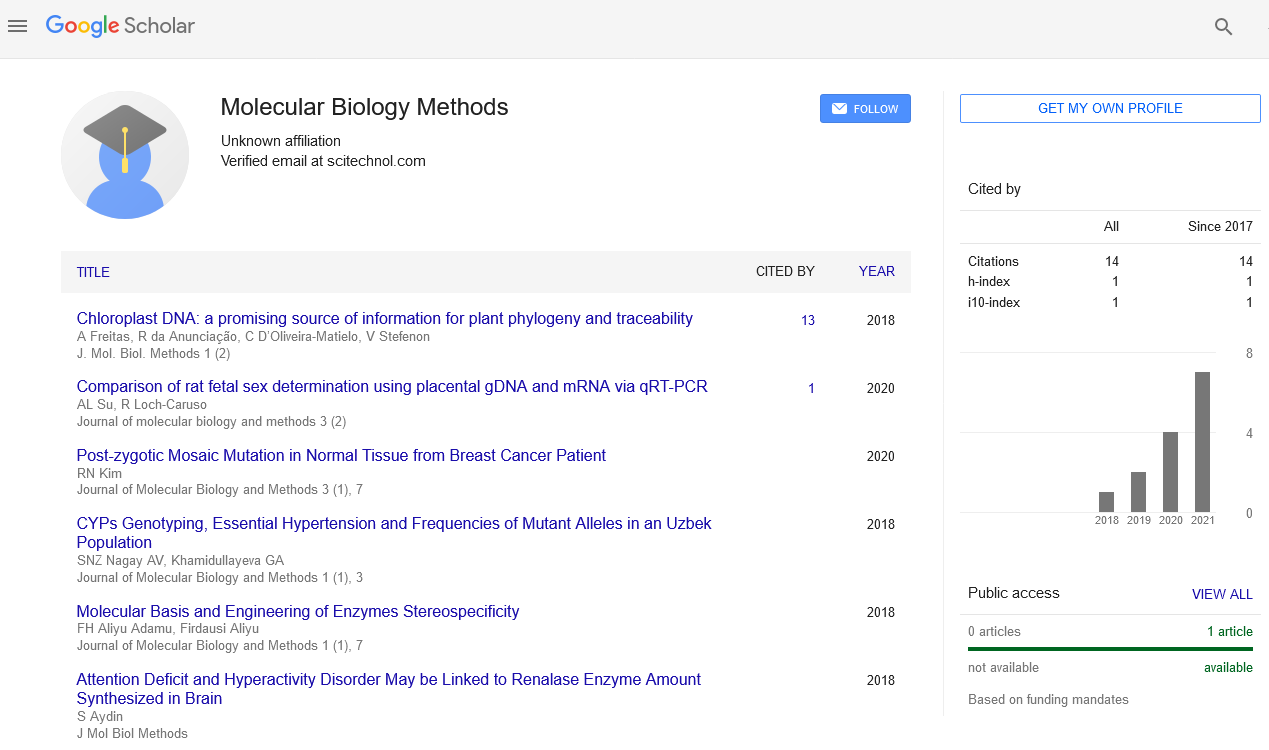Commentary, J Mol Biol Methods Vol: 6 Issue: 2
Multi-Omics Data Integration for Understanding Host-Pathogen Interactions in Infectious Diseases
Hassal Lee*
1Department of Evolutionary Genetics, Max Planck Institute for Evolutionary Anthropology, Leipzig, Germany
*Corresponding Author: Hassal Lee,
Department of Evolutionary Genetics, Max
Planck Institute for Evolutionary Anthropology, Leipzig, Germany
E-mail: hassallee@yahoo.com
Received date: 22 May, 2023, Manuscript No. JMBM-23-108103;
Editor assigned date: 26 May, 2023, Pre QC No. JMBM-23-108103 (PQ);
Reviewed date: 10 June, 2023, QC No. JMBM-23-108103;
Revised date: 19 June, 2023, Manuscript No: JMBM-23-108103(R);
Published date: 28 June, 2023, DOI: 10.35248/jmbm.1000139
Citation: Lee H (2023) Multi-Omics Data Integration for Understanding Host-Pathogen Interactions in Infectious Diseases. J Mol Biol Methods 6:2.
Description
Multi-omics data integration has emerged as a powerful approach in the field of bioinformatics to gain a comprehensive understanding of complex biological systems, especially in the context of infectious diseases and host-pathogen interactions. Infectious diseases pose a significant threat to global health, and studying the intricate interplay between pathogens and their hosts is essential for developing targeted therapeutics and effective preventive measures. By leveraging multiomics data integration, researchers can analyze multiple molecular levels simultaneously, such as genomics, transcriptomics, proteomics, and metabolomics, to unravel the underlying mechanisms driving infectious diseases. In the past, researchers used single-omics approaches to investigate host-pathogen interactions. For instance, genomics focused on the genetic makeup of hosts and pathogens, while transcriptomics delved into gene expression patterns. Although these individual datasets provided valuable insights, they lacked a holistic view of the complex interactions occurring within the infected host. However, with recent advancements in high-throughput technologies, it is now feasible to generate vast amounts of multi-omics data from the same biological sample.
Multi-omics data integration offers several advantages over singleomics studies. Firstly, it enables the identification of novel pathways and networks involved in host-pathogen interactions that may have been overlooked using traditional approaches. By integrating different omics data, researchers can identify key genes, proteins, and metabolites that play difficult roles in the disease process. Secondly, multi-omics data integration provides a more comprehensive view of the dynamic changes that occur during the course of infection. For example, transcriptomic data can reveal changes in gene expression in response to infection, while proteomic data can identify the actual functional proteins involved. Integrating these datasets can give researchers a clearer understanding of the molecular events that lead to disease progression or resolution.
Furthermore, multi-omics data integration facilitates the identification of potential biomarkers for disease diagnosis, prognosis, and therapeutic response prediction. By analyzing multiple omics datasets from large patient cohorts, researchers can identify molecular signatures associated with disease severity, treatment outcomes, and resistance. This information can aid in personalized medicine approaches, allowing clinicians to tailor treatments to individual patients based on their molecular profiles. One of the key challenges in multi-omics data integration is the complexity of the datasets and the need for sophisticated computational methods to analyze them effectively. Data from different omics platforms have varying characteristics and scales, making their integration a non-trivial task. However, numerous bioinformatics tools and algorithms have been developed to address these challenges. Machine learning and networkbased approaches, for example, can be used to extract meaningful information from multi-omics datasets and construct comprehensive models of host-pathogen interactions. Another challenge lies in the standardization and integration of diverse data types from various sources. Different studies may use different experimental techniques, data formats, and data preprocessing methods, making it difficult to directly combine datasets. Collaborative efforts, data-sharing initiatives, and the establishment of data repositories are important in overcoming these obstacles and promoting data integration in infectious disease research.
Despite the challenges, multi-omics data integration has already shown promising results in advancing our understanding of hostpathogen interactions in infectious diseases. By providing a holistic view of the molecular landscape during infection, this approach has the potential to revolutionize the development of new therapeutics, vaccines, and diagnostics. As technology continues to improve and more data becomes available, multi-omics data integration will undoubtedly play an increasingly pivotal role in combating infectious diseases and improving global health outcomes.
 Spanish
Spanish  Chinese
Chinese  Russian
Russian  German
German  French
French  Japanese
Japanese  Portuguese
Portuguese  Hindi
Hindi 